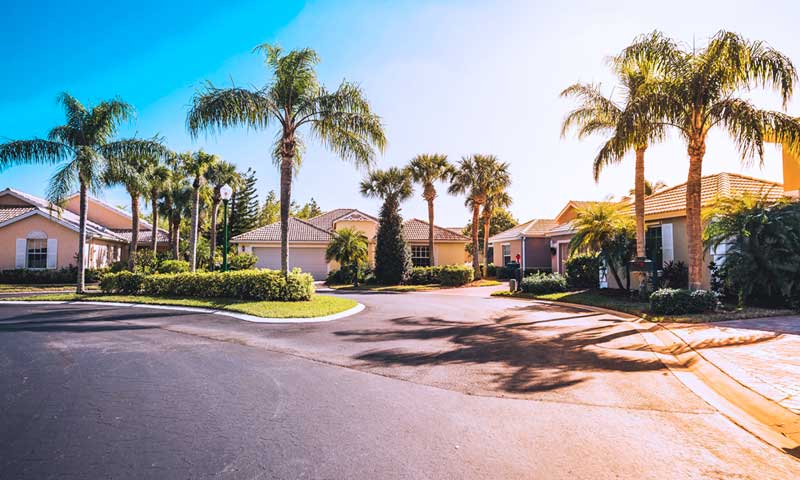BLOG

 An article authored by the firm’s Lindsey Thurswell Lehr and Berenice Mottin-Berger was featured as the guest commentary column in the online edition of today’s Daily Business Review, South Florida’s exclusive business daily and official court newspaper, and will soon appear in the print edition. The article, which is titled “Funding Community Association Repairs and Renovations,” concentrates on how the funding of long-term condominium maintenance, repair and replacement projects has become a major focus at many communities across the country after the horrific tragedy of the collapse in Surfside, Fla. It notes that many association board members who previously might have avoided increasing monthly assessments and implementing large special assessments are now looking to evaluate and address the inevitable deterioration of their buildings. Lindsey and Berenice’s article reads:
An article authored by the firm’s Lindsey Thurswell Lehr and Berenice Mottin-Berger was featured as the guest commentary column in the online edition of today’s Daily Business Review, South Florida’s exclusive business daily and official court newspaper, and will soon appear in the print edition. The article, which is titled “Funding Community Association Repairs and Renovations,” concentrates on how the funding of long-term condominium maintenance, repair and replacement projects has become a major focus at many communities across the country after the horrific tragedy of the collapse in Surfside, Fla. It notes that many association board members who previously might have avoided increasing monthly assessments and implementing large special assessments are now looking to evaluate and address the inevitable deterioration of their buildings. Lindsey and Berenice’s article reads:
. . . Rather than kicking the can down the road in hopes that future boards will address worsening maintenance concerns, association directors are coming to terms with the fact that delayed repairs and maintenance are likely to exacerbate structural problems and increase the eventual costs, in addition obviously to the potential life-safety risks, to be borne by the owners.
As never before, association boards and unit owners have become keenly aware of the importance of maintaining adequate financial reserves to fund future construction projects.
Evaluating an association’s finances logically begins with assessing its procedures and protocols for the collection of unit owner assessments. All communities need to draft and follow consistent protocols and efficient strategies for the collection of owners’ debts. By working with highly qualified legal counsel to develop their collections procedures, associations can ensure their policies and tactics comply with Florida law and yield strong results.
A careful analysis of an association’s annual budget should also be performed. Boards of directors have a duty to ensure their associations have adequate funding for common and ongoing operational expenses, including management, janitorial, landscaping, utility maintenance, insurance, security, etc. The budget should include calculations for current assessments, delinquencies, utilities, vendors/services, pending projects and long-term reserves.
The best way to determine the adequacy of an association’s reserve funding, which should be used only for matters such as roofing, painting, paving, structural repairs, plumbing, mechanical elements, and largescale property improvements, is by conducting a thorough reserve study by qualified professionals to identify and account for capital expenditures and deferred maintenance for all building components. By taking into account the estimated useful life and anticipated repair or replacement costs of everything in the property that falls under the responsibility of the association, reserve studies help boards of directors to understand the true current condition of their community, and to budget and plan adequately for future projects.
While careful budgeting and reserve funding can help to reduce the potential necessity for large special assessments demanding substantial additional funds from the unit owners, sometimes they become unavoidable due to unforeseen structural life-safety issues that may arise and require immediate attention.
Special assessments and reserve funding must meet a variety of technical and legal requirements for adoption. This makes it essential for associations to work closely with highly experienced attorneys to help ensure reserve funding and special assessments are implemented and utilized in accordance with Florida law and associations’ own governing documents.
In addition to special assessments, when emergency maintenance, repair, and/or replacement of common elements goes beyond associations’ available reserves, they may look to loans from banks and credit unions as another viable option. Associations in need of repairs after disasters can qualify for disaster relief loans of up to $2 million from the U.S. Small Business Administration. In addition, various lenders make loans to not-for-profit community associations a particular specialty of their lending portfolio, and they are accustomed to securitizing their financing through liens on association assessments.
Increases to associations’ monthly assessments, implementing special assessments, and securing financing are never easy decisions for communities. However, as the horror of the Surfside collapse makes so painfully clear, they can become absolute necessities for associations to build and maintain adequate reserves to effectively address life-safety issues that may arise. . .
Our firm salutes Lindsey and Berenice for sharing their insights on this timely and vital topic with the readers of the Daily Business Review. Click here to read the complete article in the newspaper’s website.

